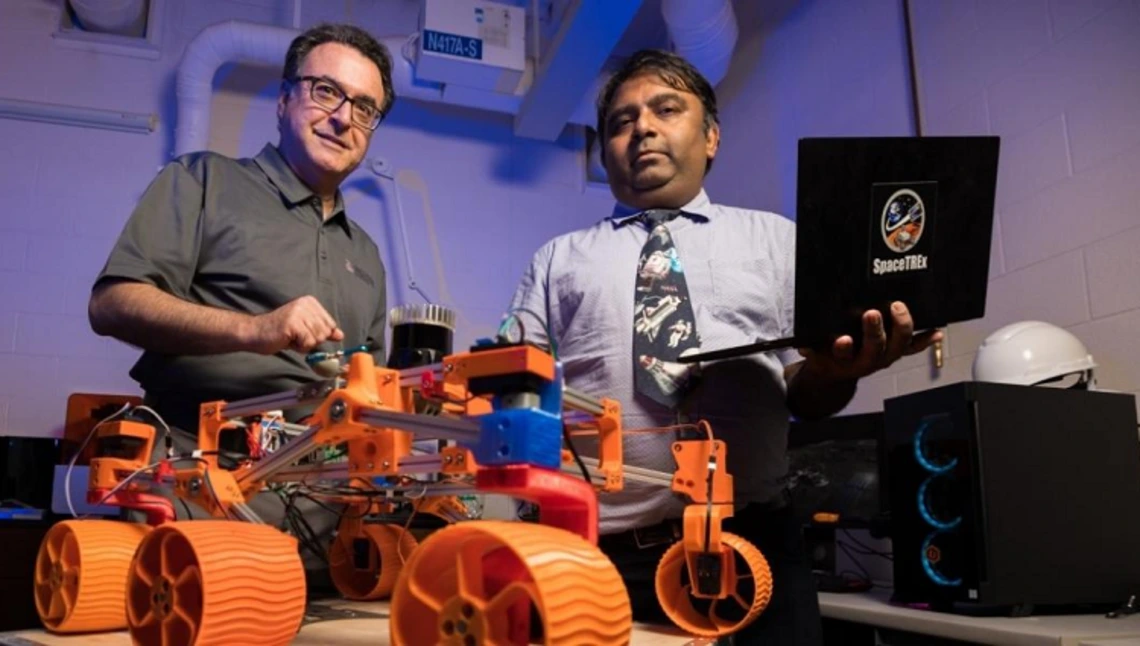Thanga Enlists Robot Swarms to Mine Lunar Resources

AME associate professor Jekan Thanga and interim head of the Department of Mining and Geological Engineering Moe Momayez recently received $500,000 in NASA funding for a new project to advance lunar mining. The pair will work to develop swarms of 3D-printed autonomous robots that may revolutionize future moon missions.
To mine for ore embedded in rock on Earth, miners need to drill through the rock, which is one of Momayez's specialties. He's developed an electrochemical process to drill through rock five times faster than any other method. But lunar mining presents a new challenge.
"Here on Earth, we have an unlimited amount of energy to throw at breaking rocks," he said. "On the moon, you have to be a lot more conservative. For example, to break rocks, we use a lot of water, and that's something we won't have on the moon. So, we need new processes, new techniques. The most efficient way to break rocks on Earth is through blasting, and nobody has ever set off a blast on the moon."
Thanga is adapting a neuromorphic learning architecture technique, which he developed in his lab, called the Human and Explainable Autonomous Robotic System, or HEART. The system not only will train robots to work together on mining, excavation and even building tasks, but it will also allow the robots to improve their collaboration skills over time.
The team plans to build and train the robots here on Earth, so they can practice. Ultimately, the researchers envision a fully autonomous swarm of robots that doesn't need to receive instructions from Earth to mine materials and construct simple structures.
"In a sense, we're like farmers. We're breeding talent out of these creatures, or a whole family of creatures, to do certain tasks," Thanga said. "By going through this process, we help perfect these artificial creatures whose job it is to do the mining tasks."
The team still considers humans a critical part of space exploration, but these robot swarms could free up astronauts to focus on other critical mission elements.
"The idea is to have the robots build, set things up and do all the dirty, boring, dangerous stuff, so the astronauts can do the more interesting stuff," Thanga said.
